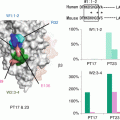© Springer Nature Singapore Pte Ltd. 2017
Yoji Ishida and Yoshiaki Tomiyama (eds.)Autoimmune Thrombocytopenia 10.1007/978-981-10-4142-6_1History of Immune Thrombocytopenia
(1)
Division of Hematology and Oncology, Department of Internal Medicine, Iwate Medical University School of Medicine, 19-1 Uchimaru, Morioka Iwate Prefectire, 020-8505, Japan
Abstract
The term “platelet” whose function was the adhesive characteristic was first used by Bizzozero in 1882. The word “purpura” is the Latin derivative of the Greek word “porphyra,” which is used to designate purple fish. The pathophysiology of this disease had not been unknown until 1951. This chapter describes the history of immune thrombocytopenia.
1 Platelets [1]
Extremely minute corpuscles were described in clotting blood by Addison in 1841 [2]. Since then, discussions about the existence of a third morphological constituent of blood continued for approximately 40 years. The term “platelet” was first used by Bizzozero in 1882 [3]. He also demonstrated the adhesive characteristic of platelets. However, several papers were published before his discovery, including one by Donné in 1844 [4], in which he described elements called globulins. In 1865, Schultze [5] described the third morphological blood element, namely, granular masses, and Osler [6] noted their presence in the venules of rats in 1874. Then, Osler and Schäfer [7] identified the same elements in blood smears by microscopy and correlated these elements with the formation of granular aggregates in the presence of bacteria. In 1878, a Frenchman named Hayem [8] described that the granular aggregates consisted of the product of altered discoid elements called “hematoblasts” in fresh blood. He believed that hematoblasts were transformed into red blood cells. To this day, French hematologists call platelets by this name.
2 Megakaryocytes
3 Purpura [12]
According to Dedekind [13], the word purpura is the Latin derivative of the Greek word porphyra, which is used to designate purple fish. It was not used generally until the sixteenth century when the term “purpura” was used to describe a purple-colored eruption. At the same time, Hippocrates [14] observed petechia and described it as a condition that resembles purpura. The reported characteristics were fetid breath, swelling of the gums, and large bleeding ulcers in the lower extremities, suggestive of scurvy. Until the sixteenth century, purpura was often associated with the manifestation of fever, which was called “petechial fever.”
A case of purpura independent of fever was reported in 1557 by Amatus Lusitanus [15], who described it as “morbus pulicaris adsque febre.” Eugalenus [16] clearly described purpura in 1658 including several distinct cases in which the purpura eruption was related with hemorrhage. In 1734, Hornung [17] divided purpura into the following three categories: simplex, febrile, and scorbutic. The next year, Werlhof [18] called purpura “morbus maculosus hemorrhagicus” and described a case of a girl who suddenly developed epistaxis and large purpura blotches on the neck, back, and arm during menstruation. In 1829, Schönlein [19] described several cases of purpura with acute arthritic manifestations. Later, Henoch [20] described five cases of purpura in children who experienced vomiting, abdominal pain, intestinal hemorrhage, and no fever. This type of purpura is now called Schönlein and Henoch purpura. However, what induced purpura was not known until 1883. Diminution in platelets, which is induced by purpura, was recognized by Krauss [21] in 1883 and by Denys [22] in 1887; the existence of platelets was in doubt, and an actual count of platelets was not conducted until 1890.
Stay updated, free articles. Join our Telegram channel

Full access? Get Clinical Tree




